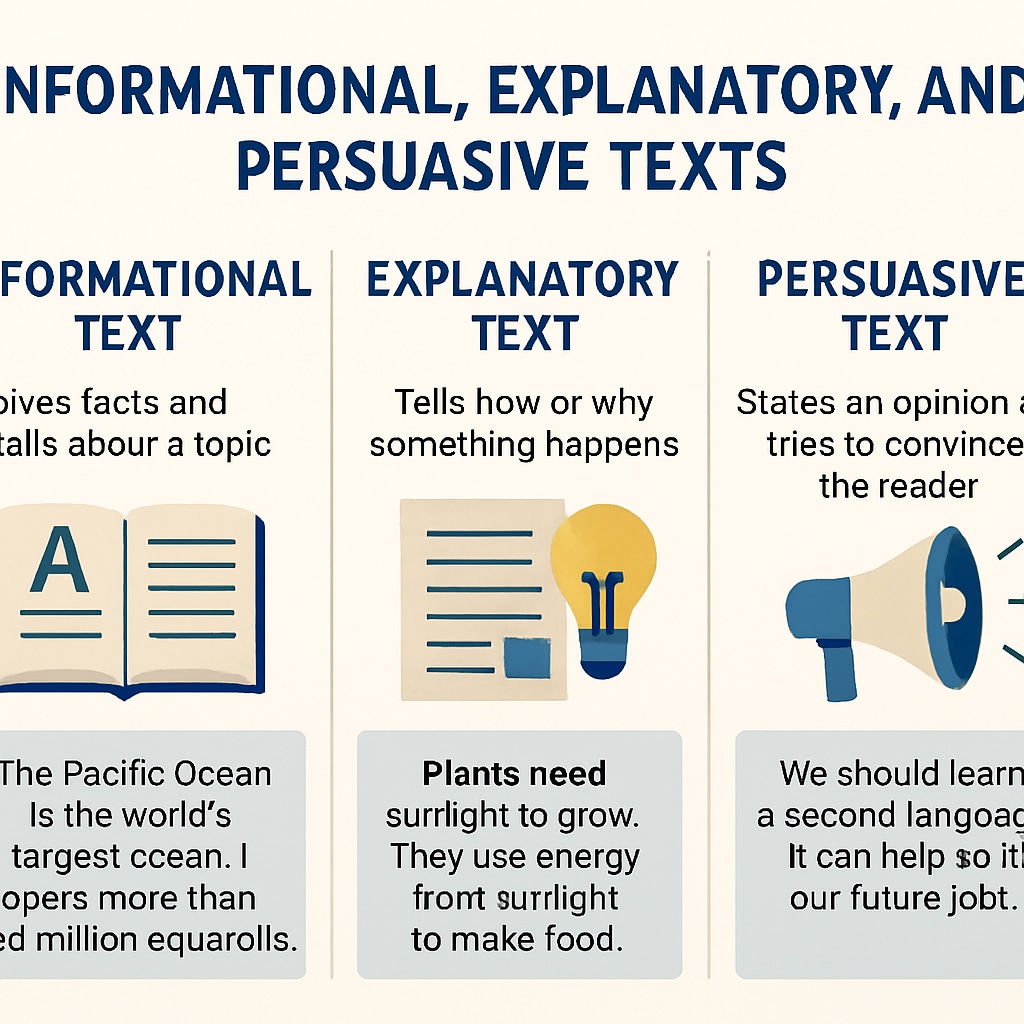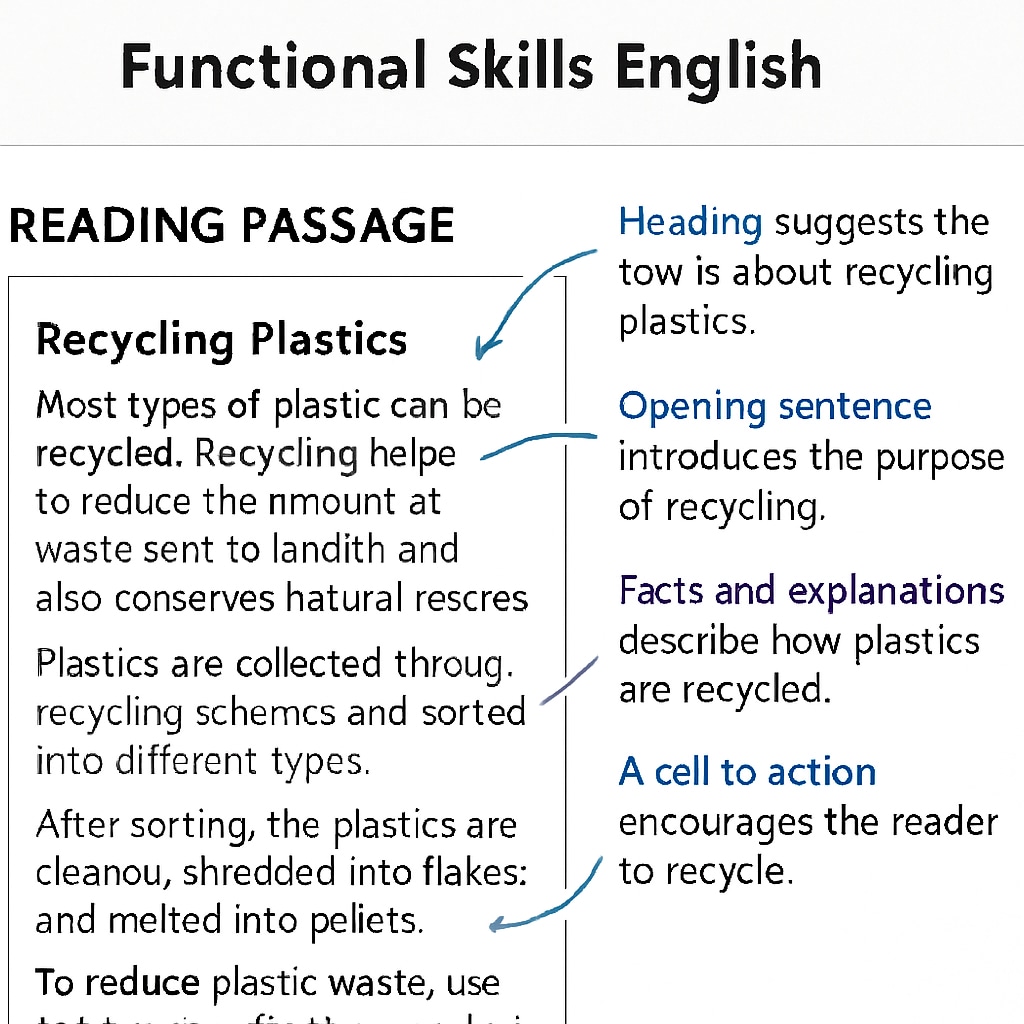The ability to identify text purposes is a critical skill in Functional Skills English Level 2 reading exams. Whether dealing with informational, explanatory, or persuasive texts, understanding how to decode their intent is key to success. This article will guide you through practical strategies to master text purpose identification and improve your reading comprehension skills.
Understanding Text Purposes in Functional Skills English
Texts in Functional Skills English exams are designed with specific purposes that serve to inform, explain, or persuade. Recognizing these purposes requires analyzing the text’s tone, structure, and language. For example, an informational text typically presents facts or data without bias, while an explanatory text provides clarifications or instructions. Persuasive texts, on the other hand, aim to influence the reader’s opinions or actions.
- Informational Texts: These texts focus on delivering factual content. They often include statistics, reports, or neutral descriptions. Common examples include news articles and manuals.
- Explanatory Texts: These aim to clarify a topic or guide the reader through a process. They often use step-by-step instructions or detailed explanations. Examples include how-to guides or FAQs.
- Persuasive Texts: These are designed to convince the reader to adopt a viewpoint or take action. They often include emotional appeals, rhetorical questions, and opinionated language. Examples include advertisements and opinion editorials.

Key Strategies for Text Purpose Identification
To effectively identify a text’s purpose, consider the following strategies:
- Examine the Language: Pay attention to the choice of words. Informational texts often use neutral and objective language, while persuasive texts may employ emotional or opinionated language.
- Analyze the Tone: Is the text formal, instructional, or conversational? A formal tone often indicates an informational purpose, whereas a conversational tone might suggest persuasion.
- Look for Structural Clues: Headings, bullet points, and numbered steps often indicate an explanatory text. Persuasive texts may include calls to action or rhetorical questions.
- Identify Supporting Features: Charts, graphs, or factual evidence are commonly found in informational texts, while persuasive texts may rely on testimonials or case studies.
For example, consider a text promoting a community recycling program. If the text includes statistics on waste reduction and environmental benefits, it is likely informational. If it explains how to participate in the program step-by-step, it is explanatory. But if it urges readers to act immediately with emotional appeals, it is persuasive.

Why Text Purpose Matters in Exams
In Functional Skills English exams, understanding text purposes is essential for answering questions accurately. Many questions require candidates to identify the text type or evaluate whether the author achieved their intended purpose. Misinterpreting the text can lead to incorrect answers, impacting overall performance.
Furthermore, this skill has real-world applications. Being able to identify text purposes helps in everyday situations such as reading contracts, advertisements, or instructional materials. By honing this skill, students not only perform better in exams but also develop practical literacy skills for life.
Final Tip: Practice makes perfect. Regularly expose yourself to different texts and actively analyze their purpose using the strategies discussed. Over time, this process will become instinctive, boosting both your confidence and competence.
Readability guidance: Use concise paragraphs and bullet lists to summarize key points. Ensure a balance of active voice and strategically placed transition words to improve flow and comprehension.


